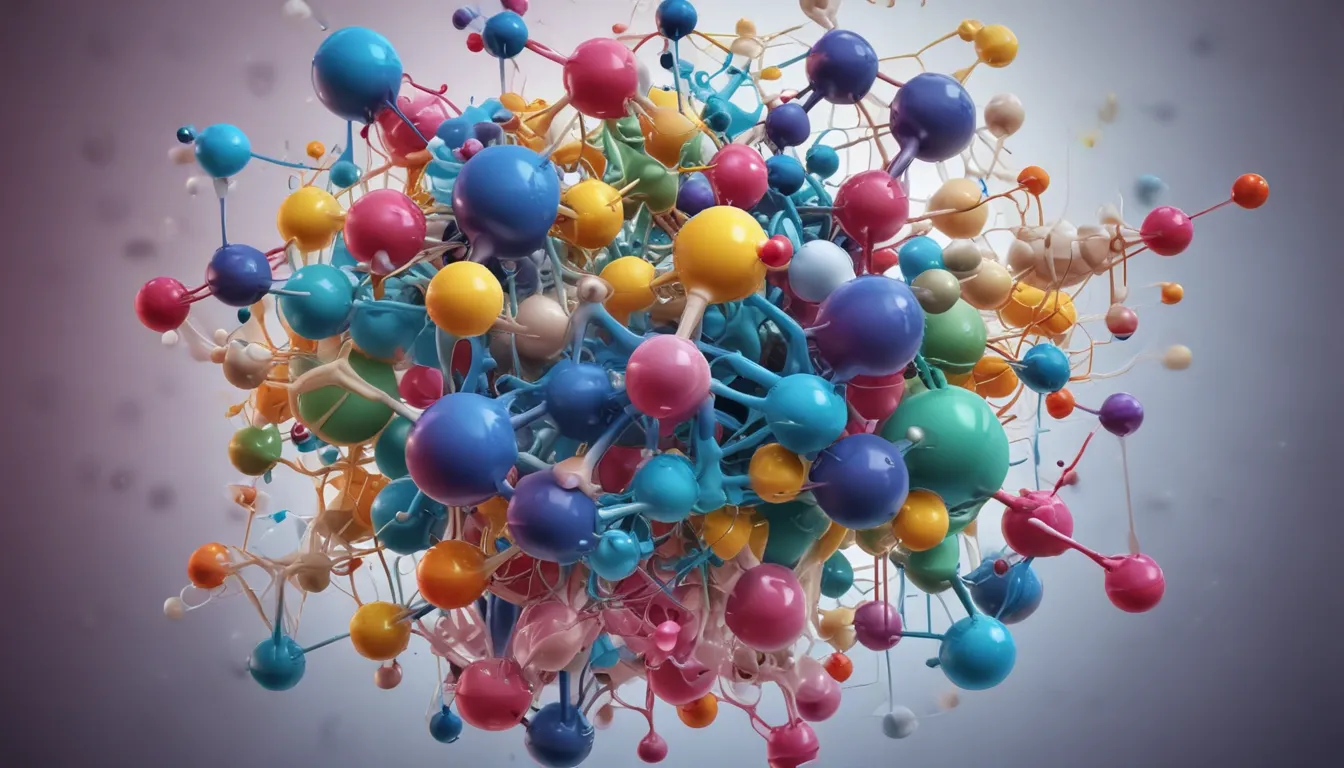A Note About Images: The images used in our articles are for illustration purposes only and may not exactly match the content. They are meant to engage readers, but the text should be relied upon for accurate information.
Are you fascinated by the intricate world of organic chemistry? Do you find yourself drawn to the complex reactions that drive chemical transformations? If so, then nucleophilic substitution is a concept that you cannot afford to overlook. In this comprehensive guide, we will delve into the fascinating realm of nucleophilic substitution, exploring its mechanisms, applications, and importance in the world of chemistry. Join us on this enlightening journey as we uncover the secrets behind this fundamental reaction and its pivotal role in shaping the world of organic compounds.
Understanding Nucleophilic Substitution: A Key Reaction in Chemistry
Nucleophilic substitution is a fundamental concept in organic chemistry that involves the replacement of an atom or a group in a molecule by a nucleophile. Think of it as a chemical game of “musical chairs,” where atoms and groups swap places in a molecular dance. This crucial reaction underpins our understanding of organic compounds and allows scientists to create new drugs, modify molecules, and study biological processes. It’s like having a secret code to unlock the mysteries of chemistry and make amazing discoveries!
Unraveling the Mechanism of Nucleophilic Substitution
At the heart of nucleophilic substitution lies a complex series of molecular interactions that drive the replacement of atoms or groups in organic compounds. This reaction occurs when a nucleophile, an electron-rich species, attacks an electrophilic center, forming a new bond and causing a leaving group to depart. Understanding this intricate mechanism is key to mastering the art of organic chemistry and unlocking the potential of various reactions.
The Dance of Nucleophiles and Leaving Groups
Nucleophilic substitution reactions hinge on the delicate interplay between nucleophiles and leaving groups. Nucleophiles, electron-rich species, donate a pair of electrons to form new bonds, while leaving groups exit the molecule, often taking electrons with them. The choice of nucleophile and leaving group significantly impacts the rate and outcome of the reaction, making them essential players in the chemical performance.
Exploring the Types of Nucleophilic Substitution Reactions
Two main types of nucleophilic substitution reactions, SN1 and SN2, govern the landscape of organic transformations. SN1 reactions unfold in two steps, involving the formation of a carbocation intermediate, while SN2 reactions proceed in a single step with simultaneous bond formation and breaking. Each type offers a unique pathway for organic reactions, shaping the molecular landscape in distinct ways.
Harnessing Nucleophilic Substitution in Organic Synthesis
The power of nucleophilic substitution extends far beyond the realm of theoretical chemistry. These reactions are widely utilized in organic synthesis to introduce functional groups, modify molecules, and create complex compounds. Chemists leverage the versatility of nucleophilic substitution as a tool to build molecular complexity and craft desired structures with precision and finesse.
Factors Influencing the Reaction Rate in Nucleophilic Substitution
The rate of nucleophilic substitution reactions is subject to various influencing factors that govern the trajectory of the reaction. Factors such as the nature of the nucleophile and leaving group, steric hindrance around the reaction center, solvent polarity, and temperature all play a crucial role in optimizing reaction conditions. Mastering these factors is key to fine-tuning the outcome of nucleophilic substitution reactions.
Nucleophilic Substitution: A Vital Player in Biological Systems
Nucleophilic substitution reactions are not confined to the realm of synthetic chemistry but play a pivotal role in biological systems as well. These reactions are involved in essential physiological processes like DNA replication, protein synthesis, and enzymatic catalysis. Understanding the role of nucleophilic substitution in biological systems is critical for developing drugs that target specific pathways and processes.
Witnessing Nucleophilic Substitution in Action: Real-Life Examples
The world of organic chemistry is rife with examples of nucleophilic substitution reactions that showcase the versatility and power of this fundamental concept. From alkyl halide reactions with nucleophiles to the hydrolysis of esters and the transformation of alcohols to alkyl halides, these reactions offer a glimpse into the diverse applications of nucleophilic substitution in organic synthesis.
Solvents: The Silent Players in Nucleophilic Substitution
The choice of solvent can significantly influence the outcome of nucleophilic substitution reactions, subtly shaping the course of the chemical dance. Polar aprotic solvents like acetone and DMF are favored for SN2 reactions, while polar protic solvents like water and alcohols are ideal for SN1 reactions. Solvents play a crucial role in solubility, nucleophile stabilization, and ion mobility, acting as silent orchestrators of the reaction.
Nucleophilic Substitution Versus Elimination Reactions: A Fine Balance
In the realm of organic chemistry, nucleophilic substitution reactions often find themselves in competition with elimination reactions, leading to distinct product outcomes. While elimination reactions result in the removal of a leaving group and the formation of a double bond, nucleophilic substitution replaces the leaving group with a nucleophile. Understanding the factors that favor one pathway over the other is essential for controlling the selectivity of the reaction.
Unveiling the Intricacies of SN1 Nucleophilic Substitution Reactions
SN1 reactions follow a two-step mechanism involving the formation of a carbocation intermediate. The rate-determining step in SN1 reactions is the dissociation of the leaving group, followed by the attack of the nucleophile. The reaction rate depends solely on the concentration of the substrate and remains independent of the nucleophile’s concentration, offering a distinctive pathway for organic transformations.
Embracing the Simplicity of SN2 Nucleophilic Substitution Reactions
In contrast to SN1 reactions, SN2 reactions unfold in a single step, where the nucleophile attacks the electrophilic carbon center while the leaving group departs. This concerted mechanism requires precise timing, with the nucleophile and leaving group colliding simultaneously. The reaction rate in SN2 reactions is contingent upon the concentrations of both the substrate and nucleophile, offering a rapid and efficient pathway for chemical transformations.
Beyond Substitution: Nucleophiles in Diverse Organic Reactions
Nucleophiles are versatile players in the world of organic chemistry, not confined to nucleophilic substitution alone. These electron-rich species participate in a wide array of reactions, including addition reactions, ring-opening reactions, and nucleophilic addition-elimination reactions. Their flexibility and adaptability make them indispensable agents in diverse chemical transformations.
Unraveling Stereoselectivity in Nucleophilic Substitution Reactions
Nucleophilic substitution reactions can exhibit stereoselectivity, leading to the formation of specific stereoisomers. This stereochemical outcome is shaped by the reaction mechanism, the geometry of the reactants, and the steric hindrance around the reaction center. Controlling the stereochemistry is crucial for synthesizing chiral compounds with precision and accuracy.
The Evolution of Nucleophilic Substitution Catalysts
In the ever-evolving landscape of organic chemistry, researchers are constantly exploring new catalysts to enhance the efficiency and selectivity of nucleophilic substitution reactions. Catalysts play a pivotal role in accelerating reaction rates, improving regioselectivity and stereochemistry, and enabling milder reaction conditions. These advancements pave the way for new breakthroughs in synthetic chemistry, opening up exciting possibilities for innovation and discovery.
Nucleophilic Substitution: A Gateway to Drug Discovery
The realm of drug discovery and pharmaceutical research relies heavily on the power of nucleophilic substitution reactions. These reactions are instrumental in synthesizing novel drug candidates, modifying lead compounds, and preparing intermediates for further chemical transformations. Efficient and reliable nucleophilic substitution methods are essential for the development of cutting-edge drugs that combat diseases and improve human health.
Illuminating the Path of Nucleophilic Substitution: A Conclusion
In conclusion, nucleophilic substitution stands as a pillar of the world of organic chemistry, offering a fascinating glimpse into the intricate dance of atoms and groups in molecular transformations. From its role in organic synthesis to its impact on biological systems, nucleophilic substitution plays a vital part in shaping chemical reactions and driving advancements in various industries. Delving into the mechanisms, factors influencing reaction rates, and practical applications of nucleophilic substitution unveils a world of endless possibilities for innovation and discovery in the field of chemistry.
FAQs: Unveiling the Mysteries of Nucleophilic Substitution
- Q: What is nucleophilic substitution?
- A: Nucleophilic substitution is a chemical reaction where an incoming nucleophile replaces a leaving group in a molecule, crucial in organic transformations.
- Q: What are nucleophiles?
- A: Nucleophiles are electron-rich species that donate electrons to form new bonds, attracting positively charged atoms in chemical reactions.
- Q: What are the types of nucleophilic substitution reactions?
- A: Two main types of nucleophilic substitution reactions, SN1 and SN2, govern organic transformations through distinct mechanisms.
- Q: What factors influence nucleophilic substitution reactions?
- A: Various factors like the nature of the nucleophile, leaving group strength, solvent polarity, and steric hindrance impact the rate and outcome of nucleophilic substitution.
- Q: How is nucleophilic substitution used in practical applications?
- A: Nucleophilic substitution reactions find applications in pharmaceutical synthesis, polymer production, and agrochemical development, driving advancements in various industries.
- Q: Can you give an example of a nucleophilic substitution reaction?
- A: The reaction between an alkyl halide and a hydroxide ion, forming an alcohol, is a classic example of nucleophilic substitution in action.
Embark on a journey of discovery into the captivating world of nucleophilic substitution, exploring the mechanisms, applications, and importance of this fundamental concept in organic chemistry. Unravel the mysteries of chemical reactions, deepen your understanding of molecular transformations, and gain valuable insights into the behavior of organic compounds. Whether you’re a chemistry enthusiast or a student venturing into the realm of organic chemistry, the exploration of nucleophilic substitution promises an exciting and rewarding endeavor. Join us in this enlightening exploration and unlock the amazing possibilities of this essential reaction in the world of chemistry.






